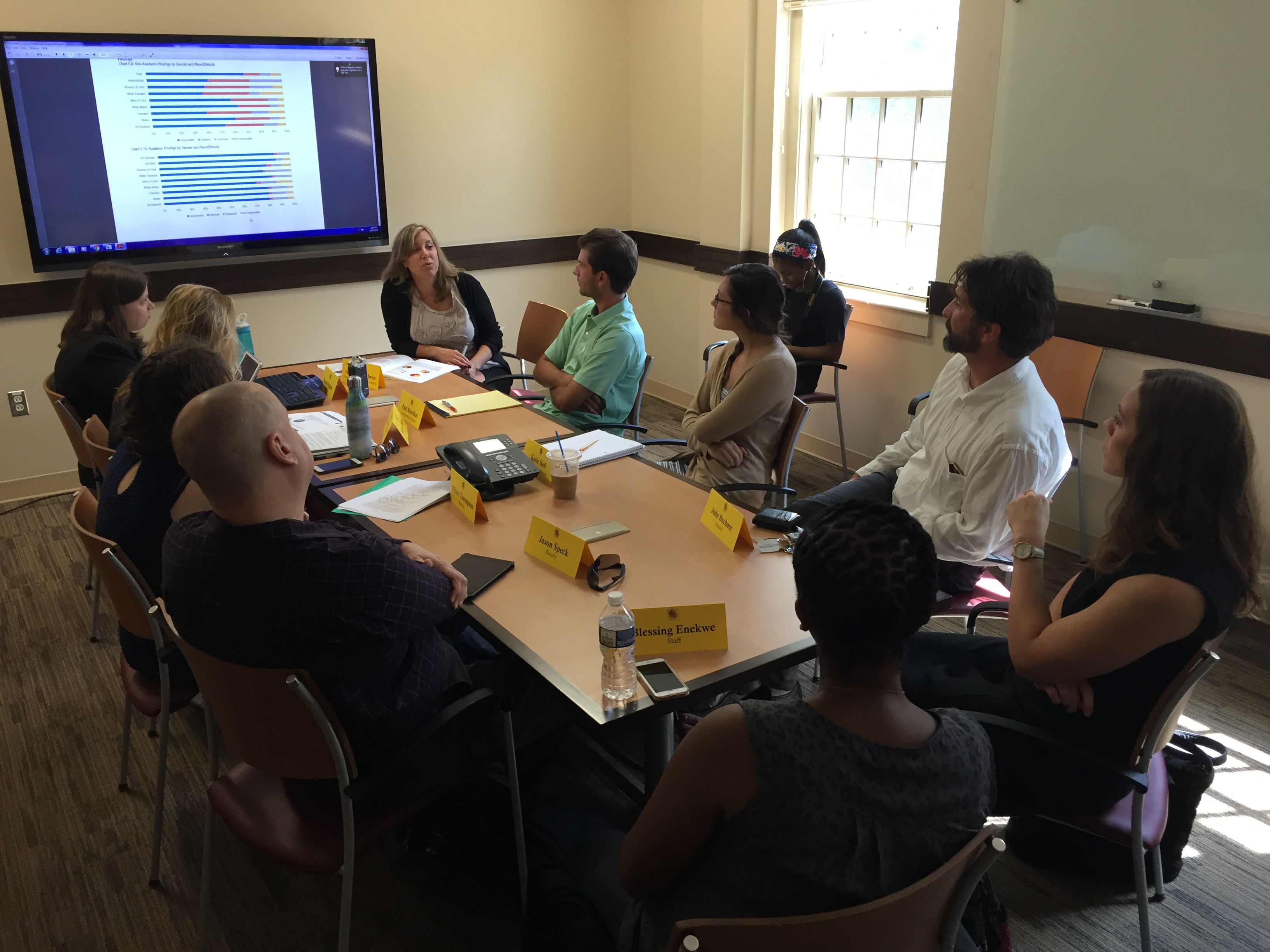By Harrison Goldstein
For The Diamondback
The University of Maryland’s Student Conduct Committee discussed various improvements and declines regarding student behavior during its monthly meeting Monday.
The committee — composed of students, faculty and staff — spent most of their time reviewing the 2016-17 annual report. Statistics revealed the number of academic dishonesty cases was down by almost 20 percent from the 2015-16 academic year.
Andrea Goodwin, the director of student conduct, said she believes the increased communication with students fostered this change.
“We did a lot of outreach about misconduct and letting students know what violates the code,” Goodwin said. “We try to target departments or colleges where we’ve seen an increase in academic dishonesty.”
Although committee members were pleased with the relative decrease in academic dishonesty cases from last year, the group is still trying to understand why the overall trend shows there have been more cases in recent years. During the 2013-14 academic year, there were 314 cases of academic dishonesty. This number grew to 567 during 2016-17, according to the annual report.
Computer science and mechanical engineering majors as well as students enrolled in letters and sciences made up the top three groups referred for academic dishonesty, according to the report. Plagiarism and cheating together account for more than 80 percent of referrals.
About 40 students were seen a second time for academic dishonesty last year.
“[It] concerns me that someone can go through our process and appear a second time,” Goodwin said. “Especially because the second-time sanctions are more severe than first-time [sanctions].”
The distribution between on- and off-campus violations was almost even, with 48 percent of cases coming from on-campus, and 45 percent from off-campus. The remaining cases are electronic, Goodwin said.
Despite these statistics, the group did not make any major changes to the content of the Code of Student Conduct during their meeting.
While they did slightly edit the code, these changes were mostly grammatical in effort to make it more understandable, said Sarah Hughes, the committee’s coordinator.
“Sometimes we have broader discussions, sometimes we go line by line through whatever section we’re working on,” Hughes said. “It just depends on what our members want to discuss at that meeting.”



